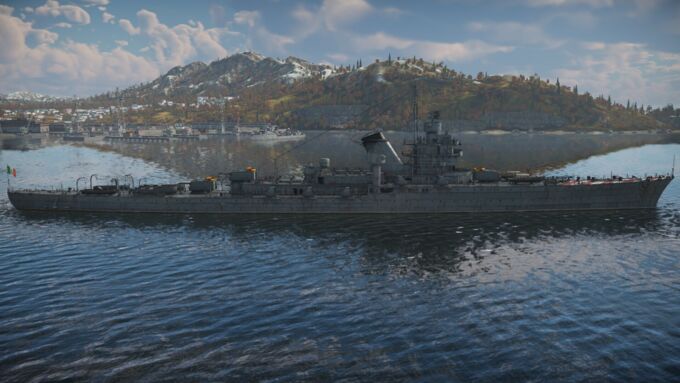The Etna class was a class of light cruisers of the Italian Royal Navy, composed of two units launched between 1941 and 1942. The two units were ordered in 1938 by the Government of Thailand to the CRDA shipyard in Trieste as Taksin class, and their construction began in August-September 1939.
After the outbreak of the Second World War, the Italian government considered the possibility of requisitioning them for use with its own navy, but the decision was formalized only in August 1942 with much delay; it was decided to complete the two ships, launched but not yet fitted out, as anti-aircraft cruisers for the escort of supply convoys, but work proceeded very slowly and in June 1943 were suspended with the units still largely incomplete.
In September 1943, the Germans captured the two hulls in Trieste, but no effort was made to complete them; self-sunken in May 1945, they were refloated and then scrapped immediately after the war.
Hull dimensions and propulsion system were kept identical to the previous ones. Still, all the original armament, as well as the aeronautical arrangements, were landed and replaced by new systems: the main armament would have been six 135/45 mm OTO/Ansaldo cannons, arranged in three newly designed twin towers (always one forward and two aft overlapping) equipped with an elevation such as to allow the use of the pieces both in anti-ship and anti-aircraft fire; always in anti-aircraft function would have been embarked six Ansaldo 65/64 mm cannons in single installations (a new model still being developed, then never entered service), as well as six twin installations of Breda 20/65 Mod. 1935. The rearrangement of the internal spaces led to four cargo holding capable of holding up to 1,000 soldiers or 500 tons of materials; there were also two small cranes at the bow and stern for cargo handling.
The construction of the two units proceeded very slowly, both because of continuous reconsiderations on their design and the difficult war situation in Italy. In June 1943, it was decided to suspend the preparation. In September 1943, at the time of the armistice of Cassibile between Italy and the Allies, the completion of the two units was far from being finished, being only about 60-65% of the work. The two incomplete hulls fell into German hands at the time of the occupation of Trieste on 10 September 1943, but no effort was made to complete the two units; both, therefore, ended up self-sunken in May 1945 in Trieste at the time of the surrender of the German forces, being later salvaged and scrapped in 1948.

